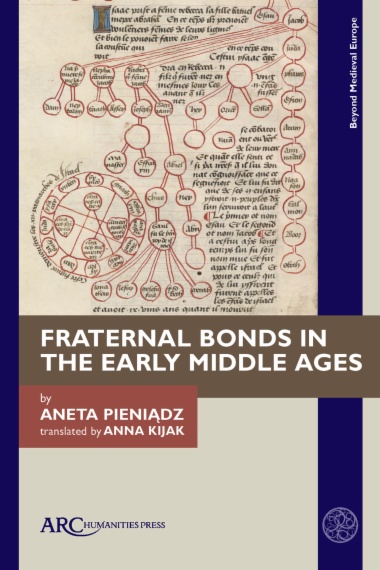The problem of fraternal relations in the early Middle Ages has not been hitherto studied in detail, especially in comparison with the multitude of studies dealing with the models of marriage, gender-based social roles, or the relations between generations. Historians have been often prone to assume that relations between siblings in European culture were naturally constant, based on loyalty, solidarity, and readiness to act in the common interest, stemming from blood ties. However, this conviction equates the category of brotherhood/fraternitas used by medieval authors with concepts associated with sources from later periods. This study does not concern narrowly defined family history, but is an attempt to examine fraternal relations in the early Middle Ages as a multidimensional cultural phenomenon. As the author seeks to demonstrate, it is difficult to speak of kinship in the ninth century and later without being aware of the religious and ideological implications of the transformations taking place at the time, even if direct traces of the impact of moralizing and theological teachings on the conduct of individuals are hard to capture in the sources.
- Front cover
- Half-title
- Series information
- Title page
- Copyright information
- Table of contents
- List of abbreviations
- Preface
- Chapter 1. Introduction
- The State of Research and Theoretical Framework
- The Sources
- Chapter 2. The Meaning of the Terms “Brother” and “Brotherhood” in Early Medieval Sources
- Biological Brotherhood
- The Christian Metaphor of Brotherhood
- Spiritual Brotherhood Established through Baptism
- Different Uses of the Brotherhood Metaphor
- Chapter 3. Equality and Fraternal Hierarchies
- Fraternal Hierarchies in the Early Middle Ages: A Legal and Historical Perspective
- Monastic Brotherhood
- Primogeniture in the Early Middle Ages:
A Historiographic Problem
- Psychological and Cultural Determinants of the
Position of the Firstborn in the Family
- The Status of the Firstborns (Eldest Brothers) in Research on the Early Middle Ages
- Terminology
- Maior natu
- Primogenitus
- Firstborns and Primogeniture in Ninth-Century Exegetical Writings
- Ius primogenitorum or the Privilege of Primogeniture
- Loss of Birthright and its Justification
- Privileged Treatment of Younger Brothers
- Chapter 4. Between Love and Hate: Models of Fraternal Relations
- Fraternal Love: amor, dilectio, caritas fraterna
- Fraternal Hate: malitia, invidia fraterna
- Fratricide
- Chapter 5. Fraternal Relations in the Context of Law and Social Practice
- Mutual Rights and Obligations of Brothers
- Property Rights
- Help in the Face of Danger: Revenge, Compensation, and Joint Oaths
- Custody Rights over Women (Sisters, Widows) after their Father’s Death
- The Status of Underage Brothers and Stepbrothers
- Legitimate and Natural Brothers
- Free and Unfree Brothers
- Chapter 6. Paternal Uncles and Nephews
- Chapter 7. Brothers and their Wives
- Chapter 8. Conclusion
- Bibliography
- Primary Sources
- MGH Diplomata series collections
- MGH Epistolae series collections
- MGH Leges series collections
- Secondary Sources
- Index

